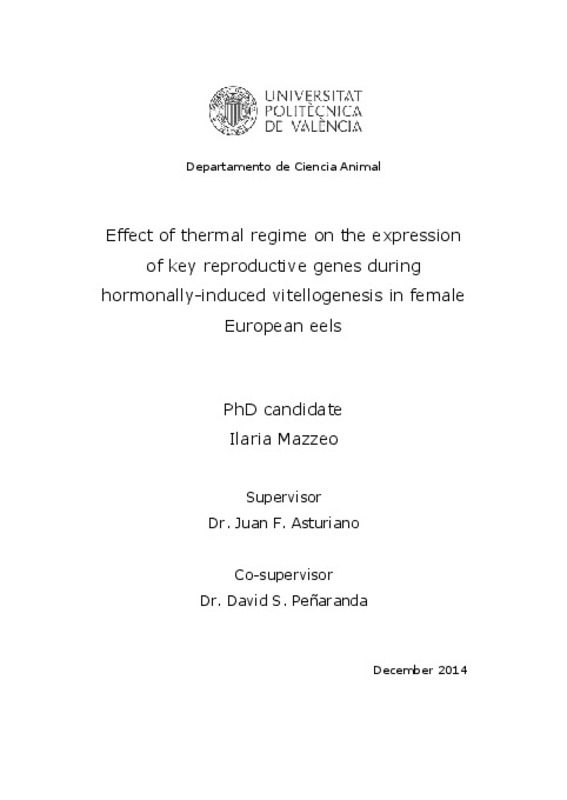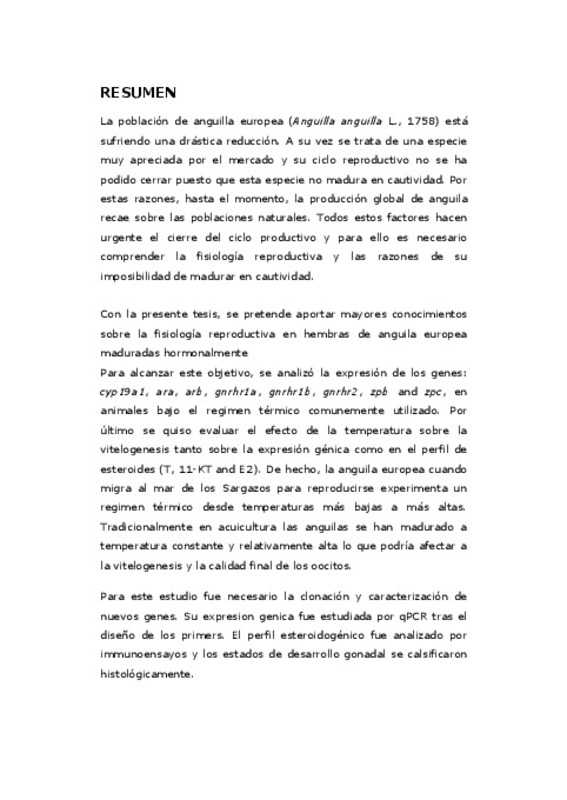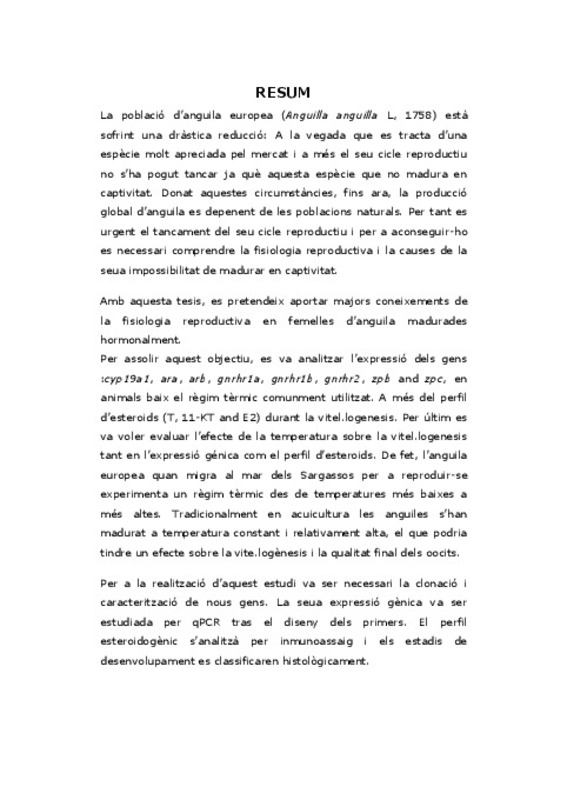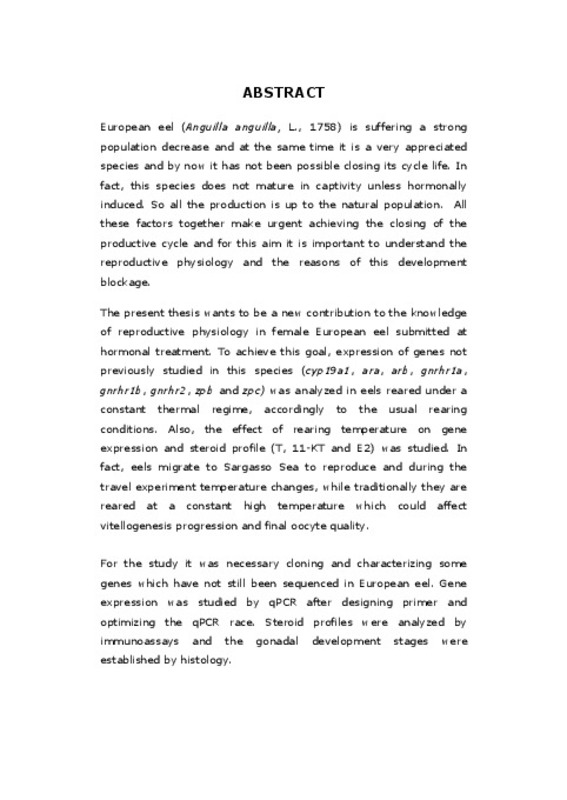- RiuNet repositorio UPV
- :
- Investigación
- :
- Tesis doctorales
- :
- Ver ítem
JavaScript is disabled for your browser. Some features of this site may not work without it.
Buscar en RiuNet
Listar
Mi cuenta
Estadísticas
Ayuda RiuNet
Admin. UPV
Effect of thermal regime on the expression of key reproductive genes during hormonally-induced vitellogenesis in female European eels
Mostrar el registro completo del ítem
Mazzeo, I. (2014). Effect of thermal regime on the expression of key reproductive genes during hormonally-induced vitellogenesis in female European eels [Tesis doctoral]. Universitat Politècnica de València. https://doi.org/10.4995/Thesis/10251/48490
Por favor, use este identificador para citar o enlazar este ítem: http://hdl.handle.net/10251/48490
Ficheros en el ítem
Metadatos del ítem
| Título: | Effect of thermal regime on the expression of key reproductive genes during hormonally-induced vitellogenesis in female European eels | |||
| Autor: | Mazzeo, Ilaria | |||
| Director(es): | ||||
| Entidad UPV: |
|
|||
| Fecha acto/lectura: |
|
|||
| Resumen: |
European eel (Anguilla anguilla, L., 1758) is suffering a strong
population decrease and at the same time it is a very appreciated
species and by now it has not been possible closing its cycle life. In
fact, this species ...[+]
|
|||
| Palabras clave: |
|
|||
| Derechos de uso: | Reserva de todos los derechos | |||
| DOI: |
|
|||
| Editorial: |
|
|||
| Descripción: |
|
|||
| Tipo: |
|
recommendations
Este ítem aparece en la(s) siguiente(s) colección(ones)
-
Tesis doctorales [5389]













